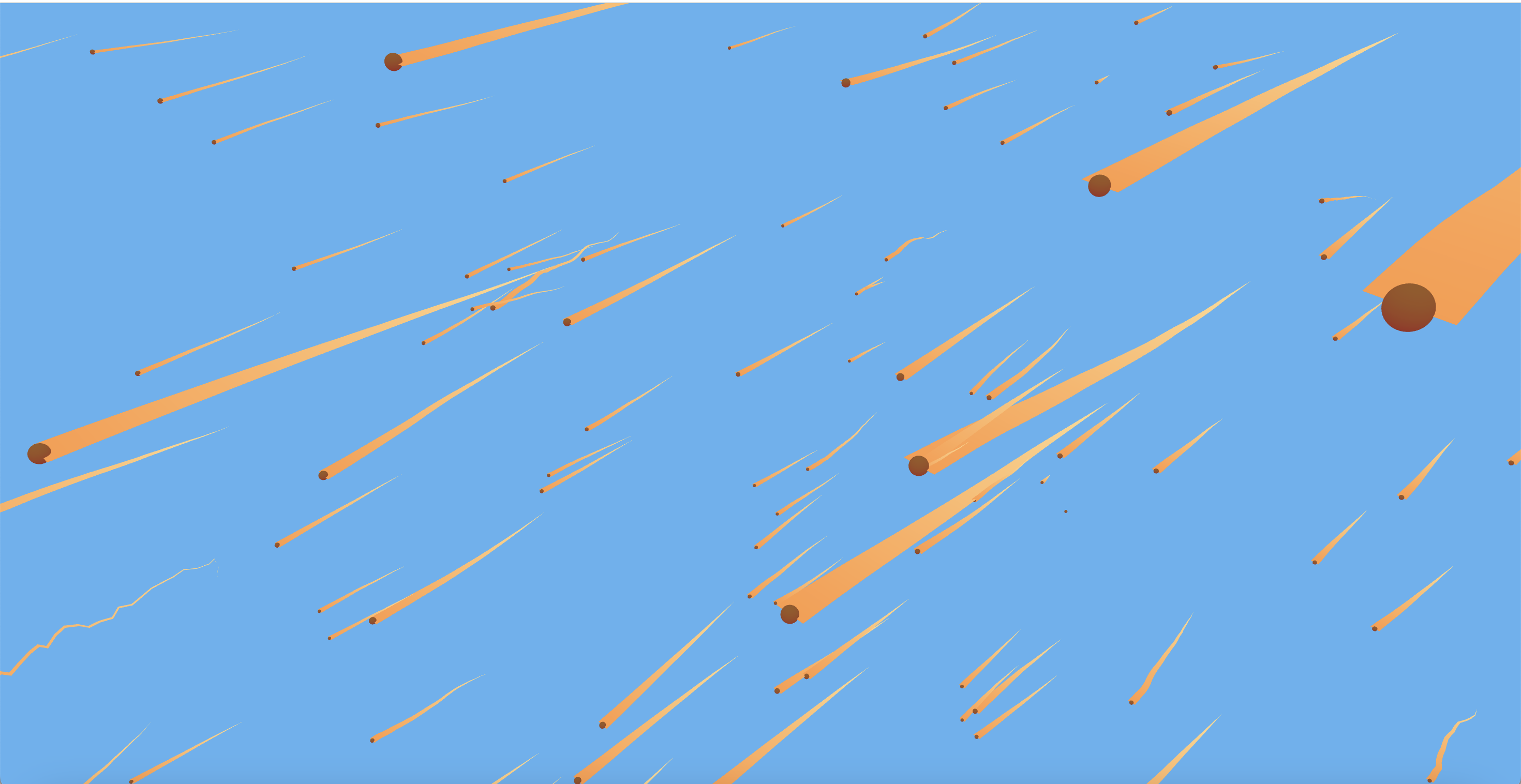Symbiosis
Daniel Wai
Advisor: Simone Salvo
An exploration of interactive design within generative arts and how computational art can evolve. Allowing audiences to play with creature-like game systems, watching it change and adapt overtime.

Abstract
Symbiosis is an exploration of interaction within generative arts. In the current landscape of generative art, we often see complex computative generated visuals but often have little or no means to further understand them through interaction. Symbiosis aims to allow audiences to play with generative systems, observe and understand behaviors and patterns, and use that knowledge to create visuals through their understanding. By using a generative design that mimics natural movement and concepts from nature, Symbiosis invites audiences to understand the visuals as if they were observing life in nature. Symbiosis also attempts to explore the ability for generative systems to learn and adapt over time. Through the use of machine learning systems, Symbiosis changes based on how audiences interact with the system environment.
Symbiosis exists in two forms, as a web game and as an installation. By exploring different interactive mediums for the generative system I aim to use interactivity to recontextualize the artwork as a whole. Through different mediums and technologies, Symbiosis aims to explore the influence of technological mediums on our understanding of the content being presented to us. By utilizing responsive interfaces such as touch & light, this piece explores interactivity as a medium. How interactivity can be utilized to layer context and create new affordances to convey what is possible to audiences in a more succinct manner. By combining concepts from generative art, interactive design, and machine learning. Symbiosis aims to deliver a new form of interactive new media art that evolves and changes over time.
Symbiosis exists in two forms. As a web game and as an installation, by exploring different interactive mediums for the generative system I aim to use interactivity to recontextualize the artwork as a whole. Through different mediums and technologies, Symbiosis aims to explore the influence of technological mediums on our understanding of the content being presented to us.

Technical Details
Generative design with Javascript, GLSL, Three.js, OpenCV, Tone.js, p5.js, Trailrender, ML5 There is also a physical interface using large inductive coils and wireless LEDs and tracks their positions with a camera.
Research/Context
I have been heavily influenced by many artists in the generative art space. Going as far back as “John Conway’s Game of Life” as an approach to generative artworks and cellular automaton. Aristid LIdenmayer’s book “The Algorithmic Beauty of Plants” uses context-free grammar as a means to create plant-like illustrations through computed patterns. “The Computational Beauty of Nature” by Gary William Flake explores recreating nature-like systems through computation. My inspirations also come from modern artists such as Jonothan Zawada and his work on computational plants. Mark J. Stock and his usage of fluid motion in the generative process. These artists all use different forms of computational systems in their generative work.
Being interested in interaction and play design, some games that have inspired my research and visuals are ABZÛ, Journey, and Antichamber. These games use minimal rulesets to control a complex system which in very little is spelt out to the player. These games invites the players to discover the world themselves rather than spelling it out for themselves.
My intention with this thesis is to try and explore other ways to apply computational thinking to visual artworks and add a layer of audience interaction to the piece. One of my main criticisms of the current generative art is the lack of interaction. Artists create complex generative algorithms only for audiences to not be able to inquire or play with them in any form. Through my thesis, I hope to be able to design a system that allows for participation in a meaningful way that lies in between a play/pause button and coding the system itself.
My intention with this thesis is to try and explore other ways to apply computational thinking to visual artworks and add a layer of audience interaction to the piece. One of my main criticisms of the current generative art is the lack of interaction. Artists create complex generative algorithms only for audiences to not be able to inquire or play with them in any form. Through my thesis, I hope to be able to design a system that allows for participation in a meaningful way that lies in between a play/pause button and coding itself.
Further Reading
Mark Kellogg's trail render - https://github.com/mkkellogg/TrailRendererJS/tree/master
“The Computational Beauty of Nature” by Gary William Flake